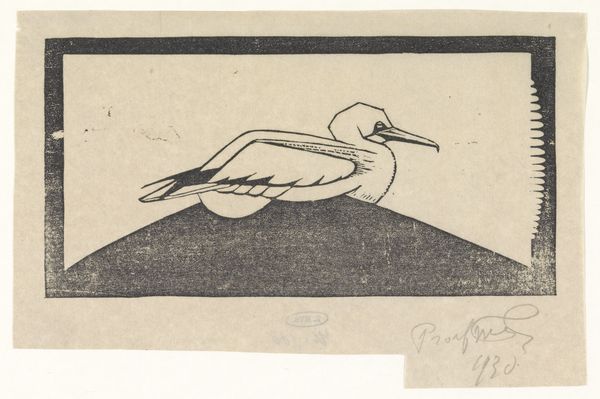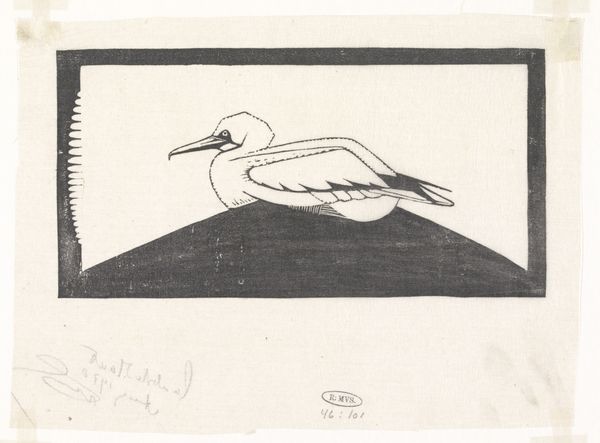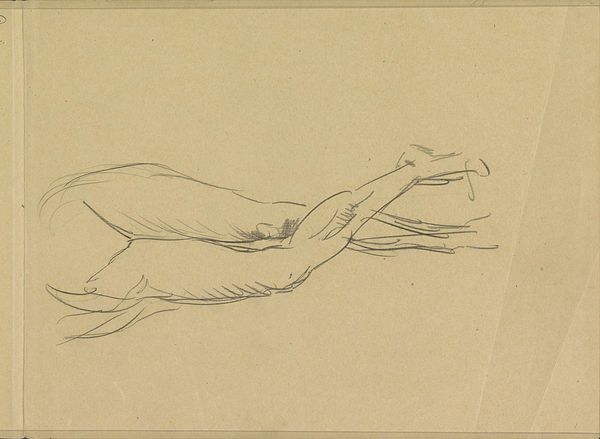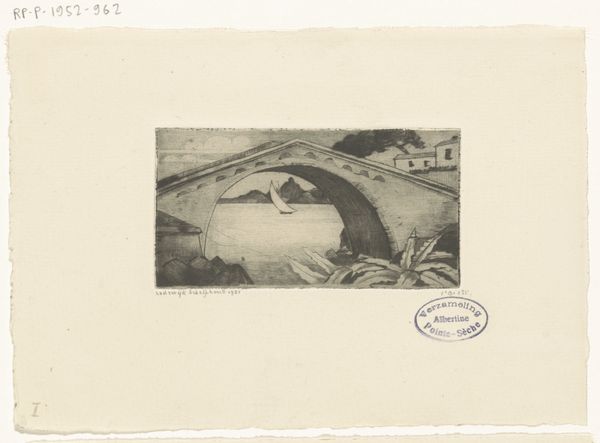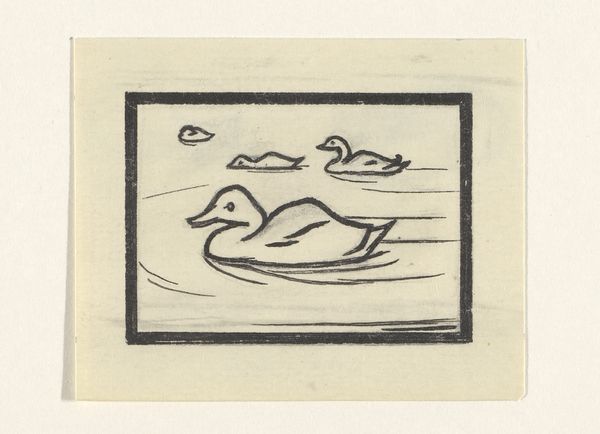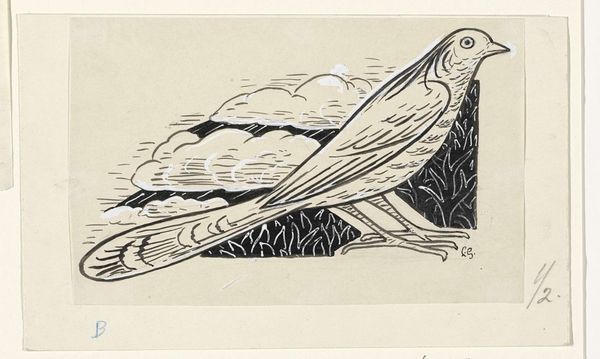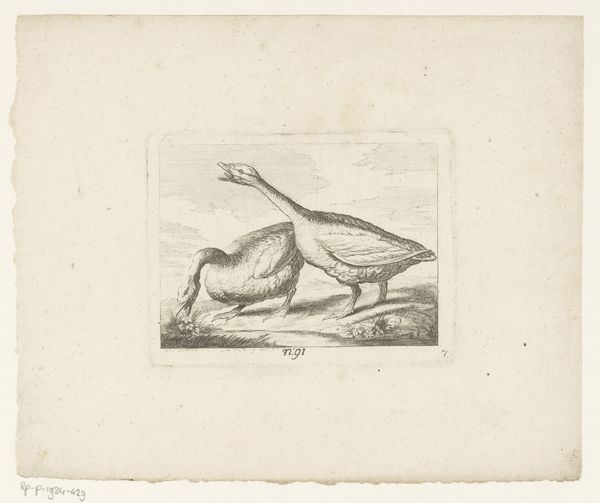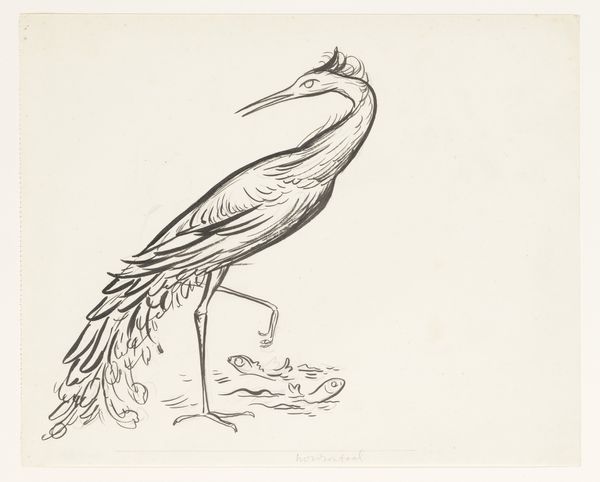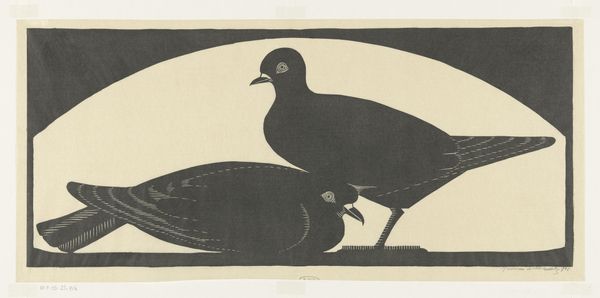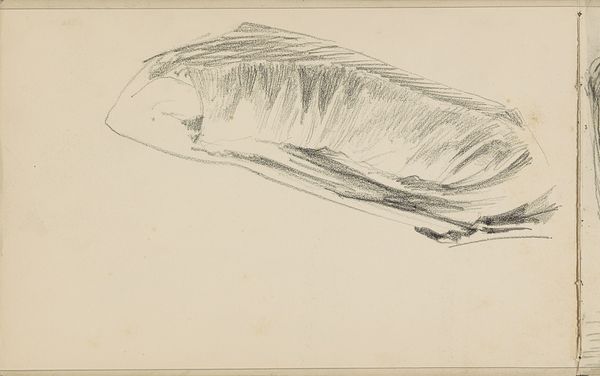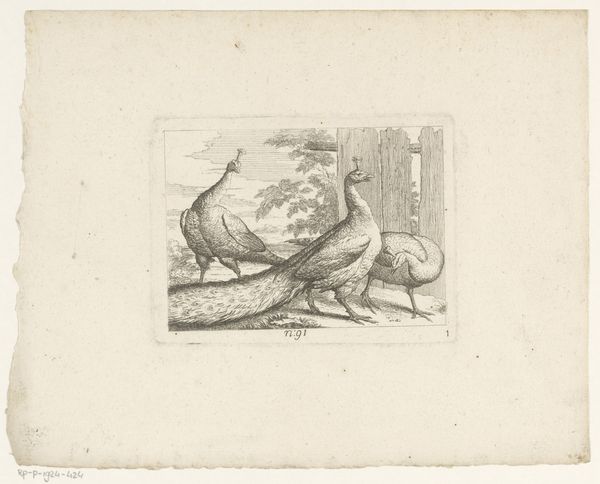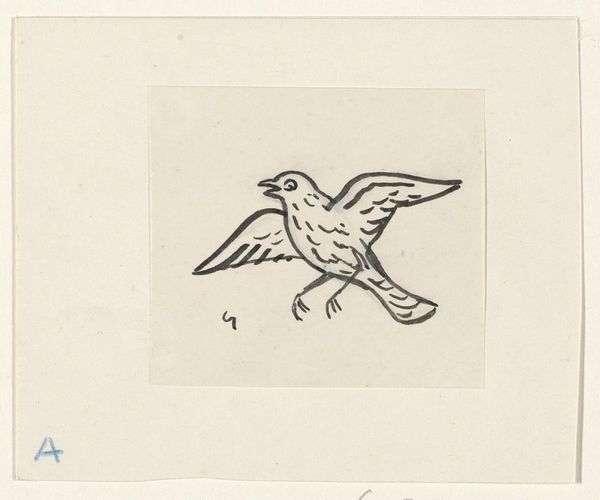
drawing, print, etching
#
drawing
# print
#
etching
#
etching
#
line
Dimensions: height 133 mm, width 210 mm
Copyright: Rijks Museum: Open Domain
Julie de Graag made this woodcut, called "Dead Bird," in 1919. It uses simple lines and a muted palette to depict a small bird lying on its back. De Graag was part of a generation of Dutch artists who embraced modernism while drawing inspiration from nature. After studying at the Haagsche Dames Academie, she developed a distinctive style, often featuring animals and plants rendered with a striking graphic quality. This print embodies those aesthetic interests. But we might also ask, what does it mean to focus on mortality during and after the First World War? What function did it serve? Was it part of a broader cultural effort to come to terms with loss? If we consider De Graag’s work in relation to these socio-historical factors, we can gain a richer understanding of its meaning and emotional resonance. Art historical research, including archival documents and period publications, can provide valuable insights into the cultural context. In the end, art's meanings are so often rooted in particular social and institutional settings.
Comments
No comments
Be the first to comment and join the conversation on the ultimate creative platform.
